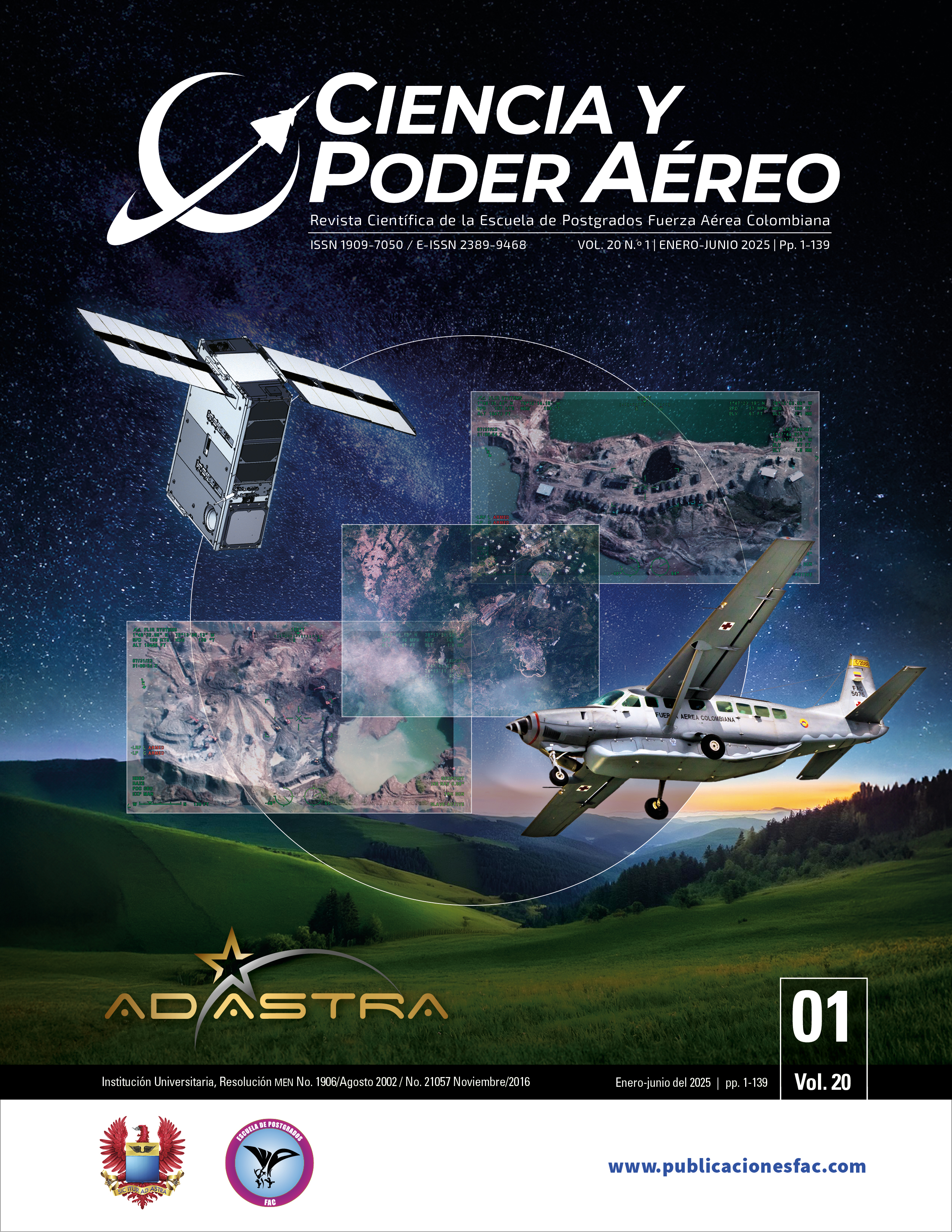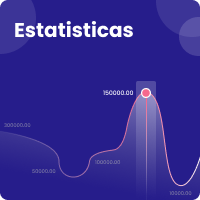Índice de Risco de ImpactoEspecífico (iriee) de aves emaeroportos da Colômbia
DOI:
https://doi.org/10.18667/cienciaypoderaereo.815Palavras-chave:
Controle de fauna selvagem, perigo aviário, risco específico da espécie, segurança aéreaResumo
A maioria dos impactos entre aeronaves e fauna envolve aves, mas algumas espécies
são mais propensas do que outras a se envolver em tais incidentes; portanto, é necessário
identificar o nível de risco inerente a cada espécie de ave, ou seja, o risco específico da espécie.
Para isso, propõe-se o Índice de Risco de Impacto Específico (iriee) como uma ferramenta
quantitativa e padronizada que consiste em uma multimatriz de oito variáveis, com três estados
de variável cada uma. Além disso, sugere-se um método pré-existente para obter o peso
relativo ou a contribuição de cada variável para o risco total, e são discutidas as virtudes e limitações
de cada variável, bem como do método em geral. O iriee pretende ser uma ferramenta
de avaliação objetiva e prática para implementação regular na maioria dos aeroportos da Colômbia,
e é projetado como um método de fácil interpretação e preenchimento que só requer
informações acessíveis a partir das observações de campo.
Downloads
Referências
Aerocivil. (2016). Programa de limitación de fauna en aeródromos [en línea]. https://www.aerocivil.gov.co/autoridad-de-la-aviacion-civil/Aerodromos/Documents/Programa%20nacional%20de%20limitaci%C3%B3n%20de%20fauna%20en%20aer%C3%B3dromos.pdf
Aerocivil. (2019). Reglamentos Aeronáuticos de Colombia (rac) [en línea]. https://www.aerocivil.gov.co/autoridad-de-laaviacion-civil/reglamentacion/rac
Anagnostopoulos, A. (2003). Bird Strike Risk Assessment for Athens International Airport [en línea]. https://www.aerohabitat.eu/uploads/media/BIRDSTRIKE_RISK_ASSESSMENT.pdf
Allan, J. (2006). A Heuristic Risk Assessment Technique for Birdstrike Management at Airports. Risk Analysis, 26(3), 723-729. https://doi.org/10.1111/j.1539-6924.2006.00776.x DOI: https://doi.org/10.1111/j.1539-6924.2006.00776.x
Alhumaidi, S.H.S., Alruwaili, I.Y.N. y Wheeler, B. (2023). u.s. Wildlife Strikes by Phase of Flight. Journal of Management & Engineering Integration, 16(1), 39-47. https://doi.org/10.62704/10057/25980 DOI: https://doi.org/10.62704/10057/25980
Barrientos, C., González-Acuña, D., Moreno, L., Ardiles, K. y Figueroa, R. A. (2016). Aves asociadas al Aeropuerto Carriel Sur de Talcahuano, sur de Chile: evaluación de peligro aviario. Gayana (Concepción), 80(1), 40-55. http://dx.doi.org/10.4067/S0717-65382016000100005 DOI: https://doi.org/10.4067/S0717-65382016000100005
Blackwell, B. F. y Fernández-Juricic, E. (2013). Behavior and physiology in the development and application of visual deterrents at airports. Wildlife in Airport Environments: Preventing Animal-Aircraft Collisions through Science-Based Management. The Johns Hopkins University Press (T. L. DeVault, B. F. Blackwell y J. L. Belant, eds.; pp. 11-22).
Carter, N. B. (2001). All birds are not created equal: Risk assessment and prioritization of wildlife hazards at airfields [ponencia]. 2001 Bird Strike Committee-usa/ Canada, Third Joint Annual Meeting, Calgary [en línea]. https://digitalcommons.unl.edu/cgi/viewcontent.cgi?article=1007&context=birdstrike2001
Civil Aviation Authority (CAA). (2002). Aerodrome Bird Control. Report Prepared by the Safety Regulation Group. CAA.
Coccon, F., Zucchetta, M., Bossi, G., Borrotti, M., Torricelli, P. y Franzoi, P. (2015). A Land-Use Perspective for Birdstrike Risk Assessment: The Attraction Risk Index. PLoS ONE, 10(6). https://doi.org/10.1371/journal.pone.0128363 DOI: https://doi.org/10.1371/journal.pone.0128363
DeVault, T. L., Blackwell, B. F., Seamans, T. W., Begier, M. J., Kougher, J. D., Washburn, J. E., Miller, P. R. y Dolbeer, R. A. (2018). Estimating Interspecific Economic Risk of Bird Strikes with Aircraft. Wildlife Society Bulletin, 42(1), 94-101. https://doi.org/10.1002/wsb.859 DOI: https://doi.org/10.1002/wsb.859
Dolbeer, R. A., Wright, S. E. y Cleary, E. C. (2000). Ranking the Hazard Level of Wildlife Species to Aviation. Wildlife Society Bulletin, 28(2), 372-378. https://www.jstor.org/stable/3783694
Dolbeer, R., Begier, M., Miller, P., Weller, J. y Anderson, A. (2023). Wildlife Strikes to Civil Aircraft in the United States, 1990-2022 [en línea]. https://www.faa.gov/airports/airport_safety/wildlife/wildlife_strikes_civil_aircraft_united_states_1990_2022
European Aviation Safety Agency (easa). (2009). Bird Strike Damage and Windshield Bird Strike [en línea]. https://www.easa.europa.eu/en/document-library/researchreports/easa2008c49
El-Sayed, A. F. (2019). Bird Strike in Aviation: Statistics, Analysis and Management. John Wiley & Sons. DOI: https://doi.org/10.1002/9781119529835
Fernández-Juricic, E., Brand, J., Blackwell, B. F., Seamans, T. W. y DeVault, T. L. (2018). Species with Greater Aerial Maneuverability have Higher Frequency of Collisions with Aircraft: A Comparative Study. Frontiers in Ecology and Evolution, 6. https://doi.org/10.3389/fevo.2018.00017 DOI: https://doi.org/10.3389/fevo.2018.00017
Fu, H., Su, M. S., Chu, J. J., Margaritescu, A. y Claramunt, S. (2023). New Methods for Estimating the Total Wing Area of Birds. Ecology and Evolution, 13(9). https://doi.org/10.1002/ece3.10480 DOI: https://doi.org/10.1002/ece3.10480
Gerringer, M., Lima, S. y DeVault, T. (2016). Evaluation of an avian radar system in a midwestern landscape. Wildlife Society Bulletin, 40(1), 150-159. https://doi.org/10.1002/wsb.614 DOI: https://doi.org/10.1002/wsb.614
Gutiérrez-Serralde, S. M., Soldatitni, C., Albores-Barajas, Y. V., Rosas-Hernández, M. P., De la Cueva, H. y Rangel-Barón, P. (2023). Comparing Bird Strike Risk Assessment Methods: A New Perspective for Safety Management. European Journal of Wildlife Research, 69(57). DOI: https://doi.org/10.1007/s10344-023-01691-1
Godínez, E. (2006). Aves y aeronaves: riesgos y peligros (3.a ed.). Amazon.
Hively, D. (2011). Biological modeling in data poor scenarios [thesis dissertation, University of California]. https://users.soe.ucsc.edu/~msmangel/Hively%20MS.pdf
Holbech, L. H., Asamoah, A. y Owusu, E. H. (2015). A Rapid Assessment of Species-Specific Bird Strike Risk at the Kotoka International Airport in Accra, Ghana. Ostrich, 86(3), 277-285. https://www.ajol.info/index.php/ostrich/article/view/141530 DOI: https://doi.org/10.2989/00306525.2015.1068878
Hong, M.-J., Kim, M.-S., Moon, Y.-M., Choi, J.-H., Lee, W.-S. y Yoo, J.-C. (2019). A Comparison of Single and Multi-Matrix Models for Bird Strike Risk Assessment. Korean Journal of Environment and Ecology, 33(6), 624-635. https://doi.org/10.13047/KJEE.2019.33.6.624 DOI: https://doi.org/10.13047/KJEE.2019.33.6.624
MacKinnon, B. (2004). Sharing the Skies: An Aviation Industry Guide to the Management of Wild Life Hazards (Transportation Canada, ed.). Aviation Publishing Division.
Marateo, G., Grilli, P. G., Ferretti, V. y Bouzas, N. (2011). Diagnóstico de riesgo aviario en un aeródromo de un aérea megadiversa del Perú. Revista Conexión SIPAER, 2(3), 203-227. http://conexaosipaer.com.br/index.php/sipaer/article/viewFile/101/141
Morgenroth, C. (2003). Development of an Index for Calculating the Flight Safety Relevance of Bird Species for an Assessment of the Bird Strike Hazard at Airports. Bird and Aviation, 23(2), 1-7.
Metz, I. C., Ellerbroek, J., Mühlhausen, T., Kügler, D., Kern, S. y Hoekstra, J. M. (2021a). The Efficacy of Operational Bird Strike Prevention. Aerospace, 8(1), 17. https://doi.org/10.3390/aerospace8010017 DOI: https://doi.org/10.3390/aerospace8010017
Metz, I. C., Ellerbroek, J., Mühlhausen, T., Kügler, D. y Hoekstra, J. M. (2021b). Analysis of Risk-Based Operational Bird Strike Prevention. Aerospace, 8(2). https://doi.org/10.3390/aerospace8020032 DOI: https://doi.org/10.3390/aerospace8020032
Ning, H. y Chen, W. (2014). Bird Strike Risk Evaluation at Airports. Aircraft Engineering and Aerospace Technology, 86(2), 129-137. https://doi.org/10.1108/AEAT-07-2012-0111 DOI: https://doi.org/10.1108/AEAT-07-2012-0111
Pujiula, D. J. (1925). Nota sobre la irreductibilidad de la biología a las matemáticas. Institució Catalana d’Història Natural [en línea]. https://publicacions.iec.cat/repository/pdf/00000134/00000020.pdf
Roa, J. G. (2007). Estimación de áreas susceptibles a deslizamientos mediante datos e imágenes satelitales: cuenca del río Mocotíes, estado Mérida-Venezuela. Revista Geográfica Venezolana, 48(2), 183-219. http://www.saber.ula.ve/handle/123456789/24702
Saaty, T. L. (2000). Fundamental of Decision and Priority Theory. RWS Publications.
Saaty, T. L. (2008). Decision Making with the Analytic Hierarchy Process. International Journal of Services Sciences, 1(1), 83-98. https://dx.doi.org/10.1504/IJSSCI.2008.017590 DOI: https://doi.org/10.1504/IJSSCI.2008.017590
Shao, Q., Zhou, Y., Zhu, P., Ma, Y. y Shao, M. (2020a). Key Factors Assessment on Bird Strike Density Distribution in Airport Habitats: Spatial Heterogeneity and Geographically Weighted Regression Model. Sustainability, 12(18). https://doi.org/10.3390/su12187235 DOI: https://doi.org/10.3390/su12187235
Shao, Q., Zhou, Y. y Zhu, P. (2020b). Spatiotemporal Analysis of Environmental Factors on the Birdstrike Risk in High Plateau Airport with Multi-Scale Research. Sustainability, 12(22), 9357. https://doi.org/10.3390/su12229357 DOI: https://doi.org/10.3390/su12229357
Soldatini, C., Georgalas, V., Torricelli, P. y Albores-Barajas, Y. V. (2010). An Ecological Approach to Birdstrike Risk Analysis. European Journal of Wildlife Research, 56, 623-632. https://link.springer.com/article/10.1007/s10344-009-0359-z DOI: https://doi.org/10.1007/s10344-009-0359-z
Soldatini, C., Albores-Barajas, Y. V., Lovato, T., Andreon, A., Torricelli, P., Montemaggiori, A., Corsa, C. y Georgalas, V. (2011). Wildlife strike risk assessment in several Italian airports: lessons from BRI and a new methodology implementation. PloS ONE, 6(12). https://doi.org/10.1371/journal.pone.0028920 DOI: https://doi.org/10.1371/journal.pone.0028920
Zakrajsek, E. J. y Bissonette, J. A. (2005). Ranking the Risk of Wildlife Species Hazardous to Military Aircraft. Wildlife Society Bulletin, 33(1), 258-264. https://www.jstor.org/stable/3784863 DOI: https://doi.org/10.2193/0091-7648(2005)33[258:RTROWS]2.0.CO;2
Downloads
Publicado
Edição
Seção
Categorias
Licença
Copyright (c) 2024 Escuela de Postgrados de la Fuerza Aérea Colombiana

Este trabalho está licenciado sob uma licença Creative Commons Attribution 4.0 International License.
Declaração de cessão de direitos autorais à revista
O autor cede exclusivamente à Revista os direitos de exploração (reprodução, distribuição, comunicação pública e transformação) para explorar e comercializar a obra, no todo ou em parte, em todos os formatos e modalidades de exploração presentes ou futuros, em todas as línguas, por todo o período de vida da obra e pelo mundo inteiro.
Todo o conteúdo publicado na revista científica Ciencia y Poder Aéreo está sujeito à licença de reconhecimento internacional Creative Commons 4.0, cujo texto completo pode ser encontrado em http://creativecommons.org/licenses/by/4.0/
A licença permite que qualquer usuário baixe, imprima, extraia, arquive, distribua e comunique publicamente este artigo, desde que seja dado o devido crédito aos autores: ao(s) autor(es) do texto e a Ciencia y Poder Aéreo, Revista da Escola de Pós-Graduação da Força Aérea Colombiana. Exceto quando for indicado o contrário, o conteúdo deste site será licenciado sob uma licença Creative Commons Attribution 4.0 Internacional.
Para usos de conteúdo não previstos nestas normas de publicação é necessário entrar em contato diretamente com o diretor ou editor da revista através do e-mail cienciaypoderaereo1@gmail.com
A Escola de Pós-Graduação da Força Aérea Colombiana e esta revista não são responsáveis pelos conceitos expressos nos artigos, nem pelos metadados fornecidos ou pelas afiliações que os autores declarem, sendo assim de inteira responsabilidade dos autores.

Licença Creative Commons
Os autores concedem à revista os direitos de exploração (reprodução, distribuição, comunicação pública e transformação) para explorar e comercializar a obra, inteira ou parcialmente, em todos os formatos e modalidades de exploração presentes ou futuras, em todas as línguas, por todo o período de vida da obra e no mundo inteiro.
Todos os conteúdos publicados na revista científica Ciencia y Poder Aéreo estão sujeitos à licença de reconhecimento 4.0 4.0 Internacional de Creative Commons, cujo texto completo pode-se consultar em http://creativecommons.org/licenses/by/4.0/
A licença permite a qualquer usuário baixar, imprimir, extrair, arquivar, distribuir e comunicar publicamente um artigo, desde que seja dado crédito aos autores do trabalho: aos autores do texto e a Ciencia y Poder Aéreo, Revista Científica da Escola de Pós-Graduação da Força Aérea Colombiana. Salvo onde for indicado o contrário, o conteúdo deste site é licenciado sob uma licença Creative Commons Atribución 4.0 internacional.
Para usos de conteúdo não previstos nestas normas de publicação é necessário entrar em contato diretamente com o diretor ou editor da revista através do e-mail cienciaypoderaereo1@gmail.com
A Escola de Pós-Graduação da Força Aérea Colombiana e esta revista não são responsáveis pelos conceitos expressos nos artigos, nem pelos metadados fornecidos ou pelas afiliações que os autores declarem, sendo assim de inteira responsabilidade dos autores.





















